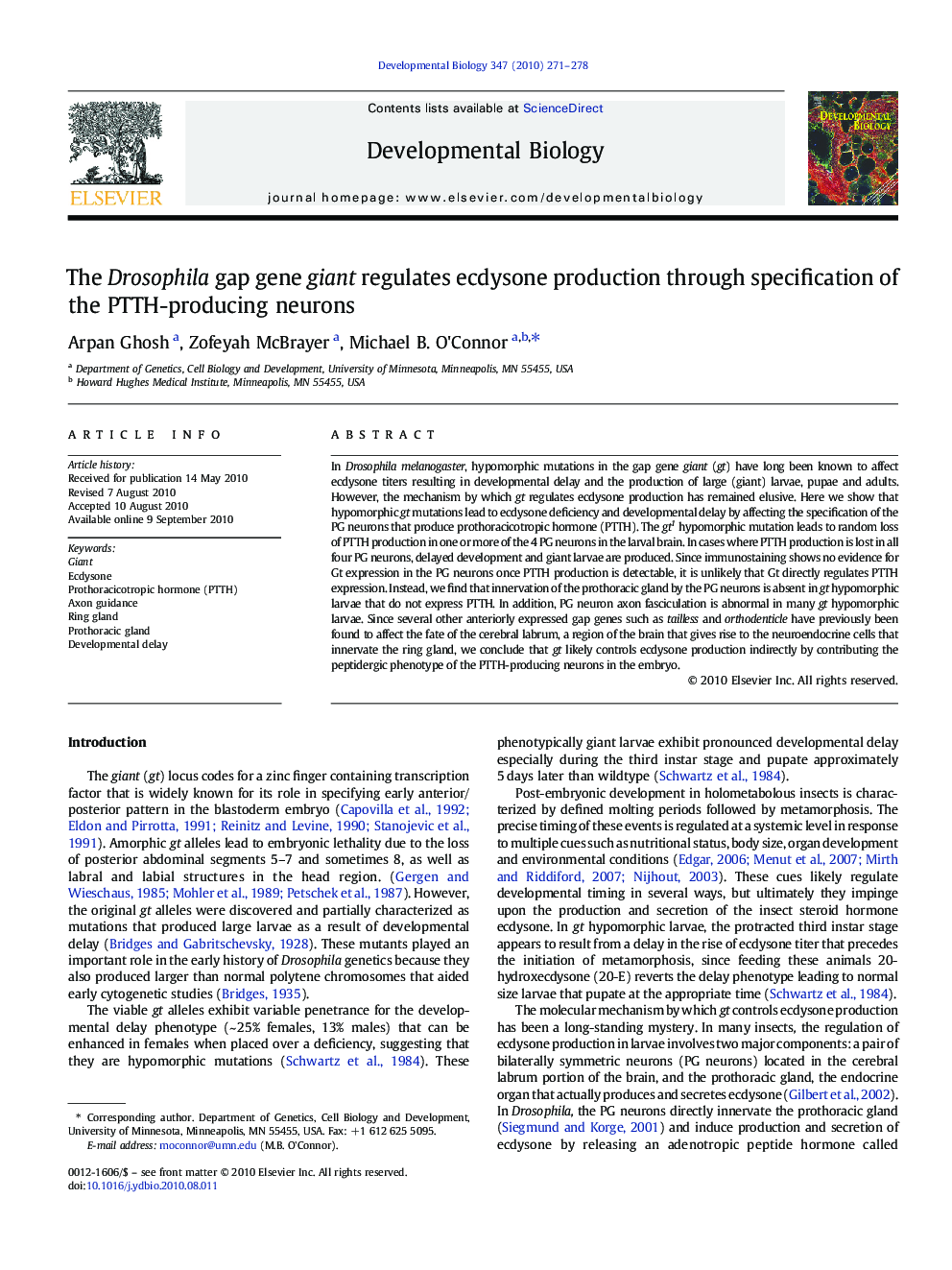| کد مقاله | کد نشریه | سال انتشار | مقاله انگلیسی | نسخه تمام متن |
|---|---|---|---|---|
| 2173772 | 1093750 | 2010 | 8 صفحه PDF | دانلود رایگان |

In Drosophila melanogaster, hypomorphic mutations in the gap gene giant (gt) have long been known to affect ecdysone titers resulting in developmental delay and the production of large (giant) larvae, pupae and adults. However, the mechanism by which gt regulates ecdysone production has remained elusive. Here we show that hypomorphic gt mutations lead to ecdysone deficiency and developmental delay by affecting the specification of the PG neurons that produce prothoracicotropic hormone (PTTH). The gt1 hypomorphic mutation leads to random loss of PTTH production in one or more of the 4 PG neurons in the larval brain. In cases where PTTH production is lost in all four PG neurons, delayed development and giant larvae are produced. Since immunostaining shows no evidence for Gt expression in the PG neurons once PTTH production is detectable, it is unlikely that Gt directly regulates PTTH expression. Instead, we find that innervation of the prothoracic gland by the PG neurons is absent in gt hypomorphic larvae that do not express PTTH. In addition, PG neuron axon fasciculation is abnormal in many gt hypomorphic larvae. Since several other anteriorly expressed gap genes such as tailless and orthodenticle have previously been found to affect the fate of the cerebral labrum, a region of the brain that gives rise to the neuroendocrine cells that innervate the ring gland, we conclude that gt likely controls ecdysone production indirectly by contributing the peptidergic phenotype of the PTTH-producing neurons in the embryo.
Journal: Developmental Biology - Volume 347, Issue 2, 15 November 2010, Pages 271–278